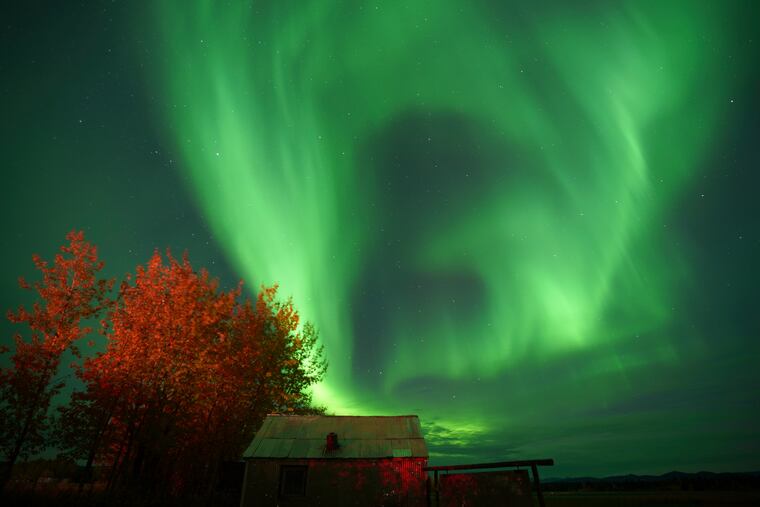The northern lights could potentially be visible in Philly this weekend
The sunspot cycle is peaking, and the sun has been especially active this week, raising aurora chances.

The sun emitted its strongest flare in seven years Thursday morning, NASA officials said, and it’s at least possible that the elusive northern lights may be visible this weekend as far south as Pennsylvania, with an outside shot that the Philly region gets to see the show.
The National Oceanic and Atmospheric Administration’s Space Weather Prediction Center still was analyzing data Thursday afternoon, and “auroras can be unpredictable,” said center project manager Bryan R. Brasher. However, it’s possible that the viewing line of the aurora borealis could droop as far south as Oregon and Pennsylvania, he said.
While acknowledging “poor certainty on timing,” Brasher said “there is an elevated chance for aurora viewing” in the Philly area “on Friday or Saturday night.”
» READ MORE: Sunspots are peaking, and perhaps Philly will get its turn to see the auroras
The timing is elusive because this all gets rather complicated, since it involves developments about 93 million miles away.
What causes the northern and southern lights?
The aurora displays results from solar storms — commonly called sunspots — that eject charged particles and magnetic fields that stream toward Earth at ultrahigh speeds. The solar material interacts with the Earth’s magnetosphere to turn on the spectacularly colorful, undulating curtains of light.
In most cases the show is confined to the polar regions, however especially strong storms can drive them toward the midlatitudes.
What is happening on the sun now?
The sun is near the crest of an 11-year sunspot cycle that began in 2019, and Thursday’s flare — what NASA calls “an intense burst of radiation” resulting from a solar storm’s release of magnetic energy — was the strongest of this cycle.
Brasher added that a related “coronal mass ejection” — a massive eruption that can propel billions of tons of material from the sun’s corona — appeared to be heading toward Earth. The NOAA prediction center has issued a “watch” for a G3, or major, geomagnetic storm on the 1-to-5 scale, through Monday.
» READ MORE: Aurora sightings are more common around the time of the equinoxes
He said it’s possible that the center will upgrade its forecast to a G4 watch.
Unfortunately, a storm of that magnitude also could result in significant disruptions to telecommunications and power systems, which is a primary reason that NOAA is in the space-weather forecasting business.
How can we track the aurora potential?
The aurora displays can occur with as little notice as we get for a sudden summer thunderstorm. To keep track, Brasher recommends signing up for alerts from the space weather center.
The center also posts three-day outlooks for solar storms and a corresponding index that’s an indicator of storm intensity and a handy number for tracking aurora potential, along with a chart for monitoring the behavior of the index in three-hour intervals. If the index reaches 8, Philly may be in play.
Also, you can follow the space weather center on X or Facebook, and Aurora Dashboard offers real-time predictions.
And it’s a safe bet if the northern lights show up anywhere around here, social media will light up also.